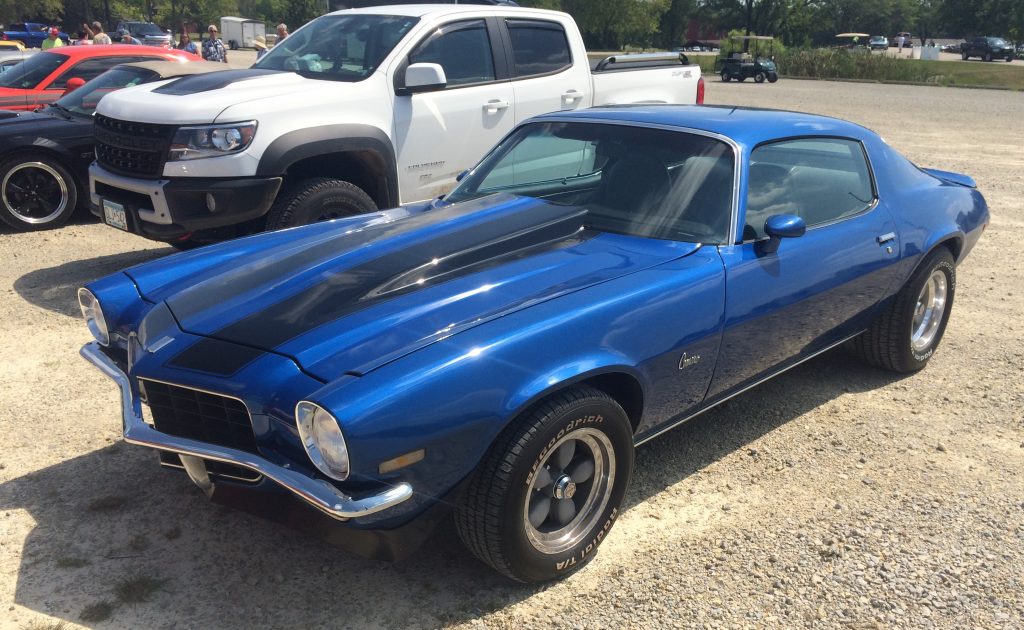You’ve got questions. We’ve got the answers—the Summit Racing tech department tackles your automotive-related conundrums. This week, we help a Chevrolet 350-powered second-gen Camaro go to the next level with some street/strip upgrades.
***
Q: I’m the proud owner of an early second-gen Chevy Camaro. It’s motivated by a mostly stock 350 engine with headers, a Holley dual-plane aluminum intake manifold, 600 cfm Edelbrock carburetor, ACCEL HEI distributor, and 5-inch tall K&N air filter with an Extreme Air Flow top plate and K&N Stub Stack. The engine is backed by a TH-350 transmission and a 10-bolt differential. I drive it mostly on the street, but sometimes take it to the track.
Would installing a set of 305 heads improve performance and raise the compression ratio (stock is 8.0:1)? How big a cam can I use with the parts I already have?
The car runs great but isn’t very fast, and I’m tired of getting my butt kicked every time I race it. Do you think steeper gears will help me off the line? If I change the cam and gears, will I have to use a higher stall torque converter? How can I tell if I have an 8.2 or 8.5-inch rear-end?
J.C. Alda, NE

A: World Products S/R 305 heads not only flow a lot more cfm than stock, but they’ll also raise your compression ratio, too. The heads feature 58cc combustion chambers and have 1.94-inch/1.50-inch valves for better low to midrange torque and horsepower–perfect for street-driven vehicles like yours.
A Summit Racing cam kit will put more power under your right foot, and a 2,500 rpm torque converter combined with 3.73 rear-end gears will help your Camaro leave the line like a rocket.
Assuming the differential is stock, you’ve got an 8.5-inch 10-bolt under the rear bumper of your car. The easy way to tell is by examining the ring gear bolts. The 8.2-inch diff uses 3/8-inch right-hand thread bolts to hold the ring gear to the carrier; 8.5-inch axles use 7/16-inch bolts with left-hand threads.

ON THAT 72 350 CHEVY I WOULD GO L-31 VORTEC HEADS
your from alda NE? im sure ive seen your Camaro then lol. learn something new everyday! I may have to go find some 305 heads now
Vortec Heads are a must. Not sure this will work, but try our ’99 Firebird website link to see the modifications to our Traditional Small Block Chevy (SBC) motor installed in the car.
Richard (aka MAXX) L. and Judy C. White
The Maxx2Racing (M2) Team
maxx2racing@yahoo.com
The Royal Purple Maxx2Racing ‘Bad Bird’ LSR Race Car
The Royal Purple ’99 Firebird Pro Touring-LSR Car
2013 Covercraft SEMA Show Feature Vehicle/’99 Firebird
2011 Royal Purple SEMA Show Feature Vehicle
2011 Point Imaging SEMA Show Product Demonstration Feature Vehicle
First In Class/Bonneville Salt Flats-Land Speed Racing 2013 Palo Alto Concours
First Place/Competition Class/2013 Northern Nevada Street Fever Car Show
‘Feature Car’, Capital Classics/Summit Racing car show, June 2013
Mojave Magnum LSA/Nascar Bodied Car Records/224.9 MPH
LTA Loring, Maine C/GCT Record Holder/208.490 MPH
AA/GCT Maxton Mile, NC Record Holder/205.886 MPH
Wilmington Mile, AA/GCT Record/202.7
Mojave Mile Nascar Bodied Car Record/202.4 MPH
Mojave Mile Land Speed Auto 1st Place/April 2011
Mojave Ford GT Event/Nascar Bodied Record 206.7 MPH
David Haas 200 Club Records set in the RP ‘Bad Bird’-Four (4) of Ten (10)
Three (3) MKM Mojave 200 MPH LSR Club Maxx2Racing Team Members
http://maxx2racing.com/
http://maxx2racing.org/
http://maxx2racing.info/’99 Firebird website
z28 camaro
also try a 383 stroker kit. biggest bang for buck mod along with some good aftermarket heads. about 450-500hp is the limit for a street use 350 otherwise you start snapping crankshafts and then start spending silly money on billet items. or have to step up to a big block.